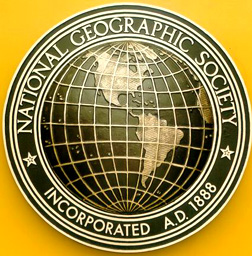Good morning,
The forecast calls for a partly sunny day today, with a high of twenty-two degrees.
Over at the Janesville Gazette, there’s a story about a settlement in an case involving charges against Darien Village board members for violations of Wisconsin’s Open Meetings Law, “Darien board settles in open meetings case.” (Wisconsin Open Meetings Law, Wis. Stat. § 19.81-19.98.)
There likely aren’t enough cases like this in Wisconsin, as I’d guess violations are sadly common, and committed with near-impunity.
Helpful information on the Open Meetings Law is available from the Wisconsin Freedom of Information Council and the Wisconsin Attorney General’s Office.

It’s a happy anniversary for exploration, discovery, and science: on this day in 1888, the national Geographic Society was founded. Wired recounts the anniversary:
1888: Bound together by an enthusiasm for geography and travel, a small cadre of distinguished businessmen, explorers, scientists and scholars officially incorporates the National Geographic Society in Washington, D.C.
What began 122 years ago as a small, elite society for “the increase and diffusion of geographic knowledge” is now one of the world’s largest nonprofit scientific and educational institutions. Today its mission has a broader theme: “to inspire people to care about the planet.”
….The society’s publication, National Geographic magazine, began printing just 10 months after that founding meeting. It was initially a drab-looking scholarly journal sent to 165 charter members. Now its hallmark photography and more mainstream writing reach the hands of more than 40 million people per month….
From 1899 to 1910, membership grew from 1,400 to 74,000, and in the following 10 years advanced to to 713,000, and then continued to skyrocket. As a result, the society has become one of the largest and most inclusive in the world.
The explosive growth in membership is largely attributed to Grosvenor’s shift in the editorial direction of the magazine at the turn of the 20th century. Inspired by travelogues such as Charles Darwin’s Voyage of the Beagle and Richard Henry Dana Jr.’s Two Years Before the Mast, he made the magazine more accessible by including first-person narratives and the use of more straightforward, simple prose.
Grosvenor’s other game-changing decision was to feature photography prominently in the magazine. Surprisingly, National Geographic’s hallmark photojournalism began as a desperate attempt to fill 11 pages of the January 1905 issue before it went to press.
There is no tyranny so absolute as a printer’s deadline, but I simply did not have a good manuscript available. A large and rather bulky envelope lay on my desk. Still brooding about the unfilled pages, I opened the package listlessly … then stared with mounting excitement at the enclosures that tumbled out. Before me lay some 50 beautiful photographs of the mysterious city of Lhasa in Tibet.
Grosvenor considered the images so extraordinary that he used them despite the belief that they might cost him his job. But membership response was so positive that it became the genesis of the magazine’s popular appeal.
